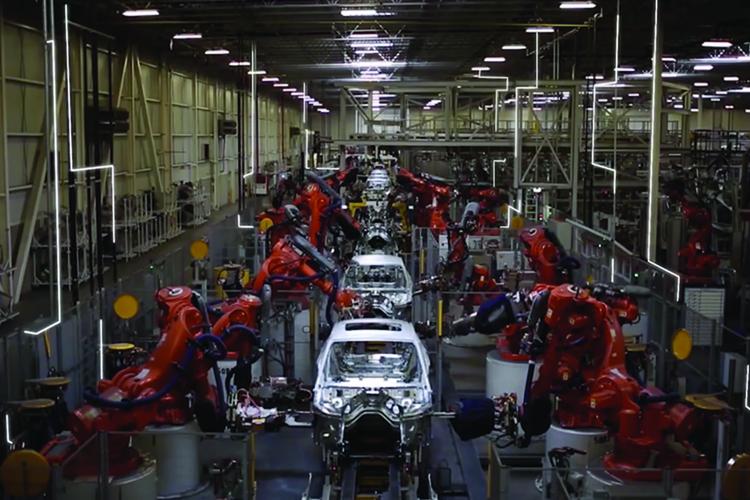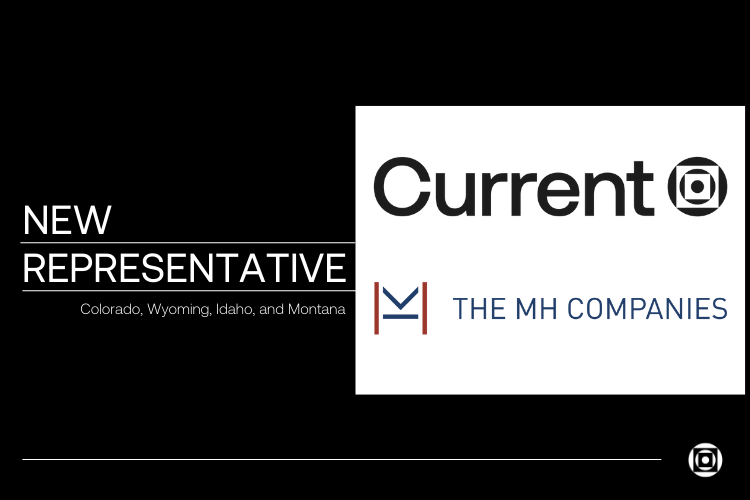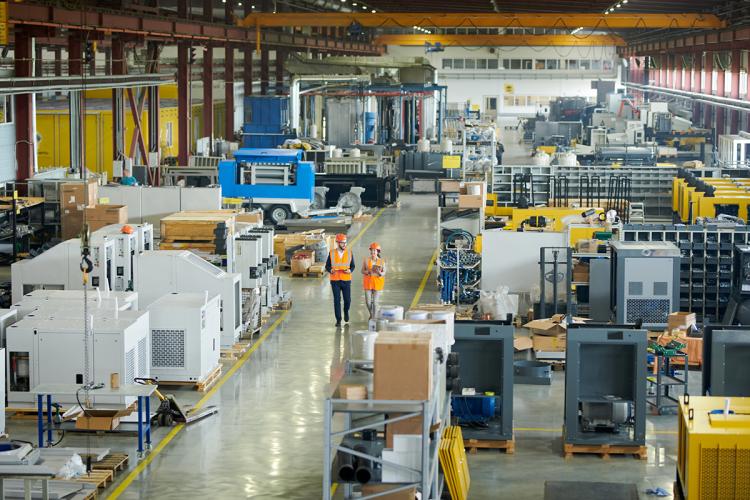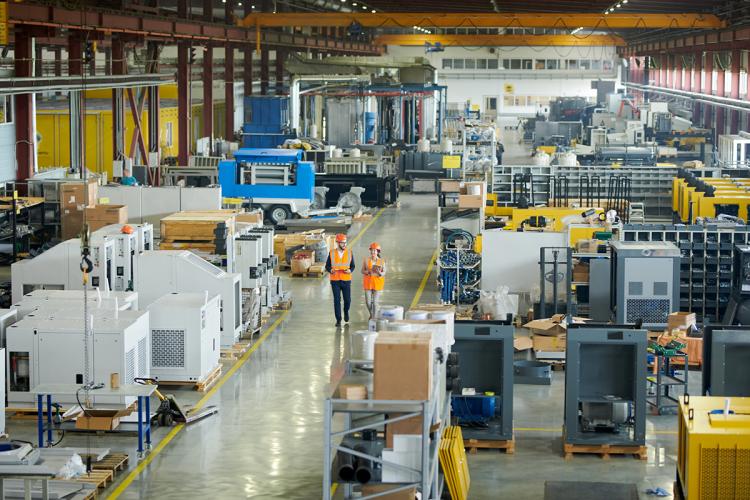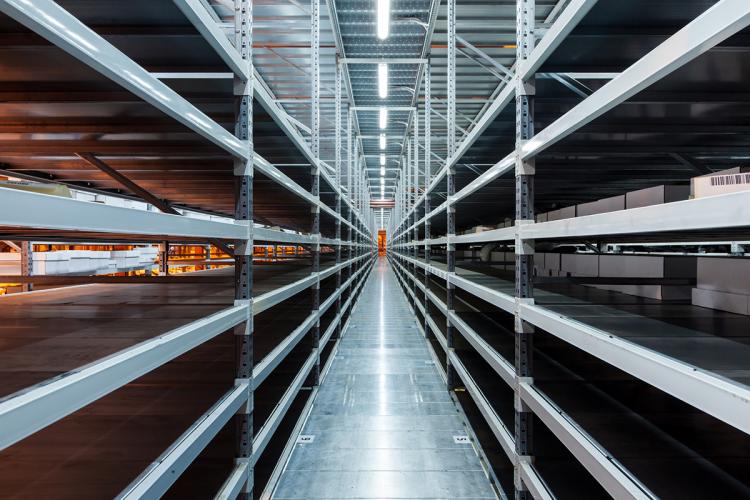LED for Industrial: How General Motors Is Saving Today with Tomorrow in Mind
LED for Industrial: How General Motors Is Saving Today with Tomorrow in Mind
When General Motors wanted to reduce energy consumption across their portfolio, they tapped into Current, to outfit their facilities with new LED fixtures that will cut lighting-related energy use by more than 60 percent. After starting installations in 2017, the automaker is well on its way with more than 50,000 LED fixtures installed. At the same time, GM is incorporating sensors and controls into the new light fixtures to create a future-proof digital ceiling that can provide even greater savings and become part of a more robust intelligent infrastructure.
Sustained Excellence in Saving Energy
As a seven-time EPA ENERGY STAR® Partner of the Year award winner, GM continues to demonstrate leadership in sustainability through superior operational efficiency. Since 2010, the company has saved more than $230 million in energy costs while eliminating 1.8 million metric tons of carbon emissions by engaging many of its facilities in energy-reduction challenges.
In 2015, GM’s Lighting Strategy Committee began to focus on lighting improvements for large production centers. Like most manufacturers, GM used a broad mix of fluorescent and halogen high-intensity discharge (HID) lighting throughout its plants and properties.
The committee liked the promise of energy-efficient LED lighting but given the higher upfront cost of LED, GM wanted assurances the impact would justify their investment.
Getting Help from a Trusted Advisor
Current’s project team, led by Account Manager Gene Taylor, met with committee members to show how moving to a standardized LED solution could help the automaker better manage its long-term energy usage. Simultaneously, Taylor and team demonstrated to GM how the price of LED has fallen sharply in recent years, while the reliability of the technology has increased considerably over that same time.
“We built a commercial and technical business case for LED going step-by-step,” said Taylor. “There are many types of lighting environments that GM has to think about—from assembly to production to paint—and they wanted a fixture that appropriately fit those different areas. It also had to be affordable, given the tens of thousands of lights that would be going up, and we were able to alleviate those concerns in multiple iterations. The strong dialogue between our teams can’t be understated here; it takes excellent communication to successfully steer a project this size.”
High Praise for High Bay LED
As talks progressed, the GM committee began to gravitate toward Current’s Albeo™ LED high bay lighting fixtures that are designed for ceilings 20 feet (6 meters) and taller. The fixtures provided GM with a variety of light pattern options to match production, warehouse and other environments, and could be paired with motion sensors, daylight-harvesting capabilities and wireless controls for increased energy-savings potential.
The committee also liked the uniform light output of the Albeo fixtures and how it eliminated “hot spots” that are typical with traditional light sources. Additionally, General Motors can save money and resources thanks to the extended life span of LEDs, which equates to fewer replacements and less maintenance.
“This had to be a solution GM could put in place and not think about for 10 years or more,” said Taylor. “In fact, five of the sites selected for LED were new manufacturing facilities or existing plants where millions of square feet would be added. In each case, we were looking at between 5,000 and 7,000 fixtures total, so it absolutely had to be the right choice.”
“Current was able to deliver everything the lighting committee was looking for,” added Taylor.
Driving Innovation Again
One major selling point for the automaker was Current’s ability to deliver Albeo fixtures without silicone components. Many LED fixtures contain silicone, but in a highly sensitive production environment, silicone off-gassing—where chemicals are released under normal temperature and pressure conditions—can cause paint to bleed or bubble, among other problems, which was a major concern for the automaker.
“Because of this, the GM team wanted to understand everything inside the fixtures and challenged us to modify the design to meet their specific requirements,” Taylor said. “The scale of this project and the expertise of our design engineers made it possible to go down that path and, following rigorous technical certifications, deliver the level of customization GM needed.”
Taylor added that the solutions that result from such collaborations often translate to products other Current customers can take advantage of.
“Working in concert with many of the world’s largest companies to solve new challenges is all part of elevating our product portfolio over time,” he said.
Eye on 2021
To date, Current has shipped more than 50,000 fixtures to over 20 GM facilities in North America and continues to install LED fixtures in the remaining sites. The automaker is already saving over $2 million annually compared to its old fluorescent and HID lighting, and GM projects that number to increase as installations continue.
LED lighting is just another way GM is helping its facilities uncover opportunities for energy improvements. In 2016 alone, the company’s commitment to reducing energy intensity enterprise wide saved $73 million and avoided 388,000 metric tons of carbon emissions, equivalent to the electricity use of 57,000 homes.
“The product quality is high, and it’s extremely reliable,” Taylor said. “And if something goes wrong, they know we’re standing behind it. This experience—the ability to differentiate our product and engage GM directly—was very productive and something we couldn’t have done through typical channels.”
Raising the Digital Ceiling
Current’s connectivity-capable LEDs also open the door to future productivity and energy-efficiency possibilities for GM. Beyond lighting controls that will be incorporated into many of the fixtures, GM could choose to add other “smart” sensors and devices to its fixtures over time.
“With LED comes the opportunity to install a digital ceiling in your facilities,” said Taylor. “And while you may not be ready to go down that path just yet, putting the infrastructure in place today is a huge step to future-proofing your business as data solutions become intertwined with building systems and built infrastructure.”
Are you driven to find out more about your plant’s potential for superior operational efficiency?


